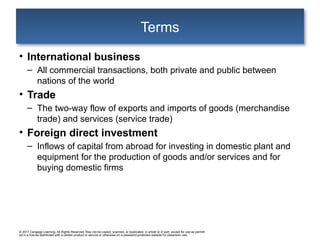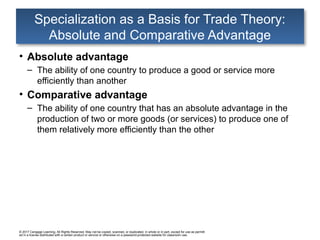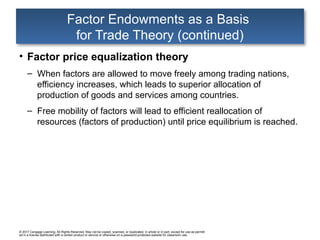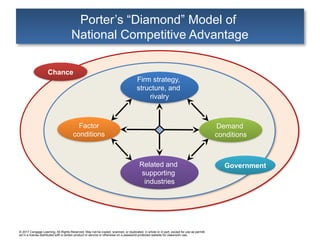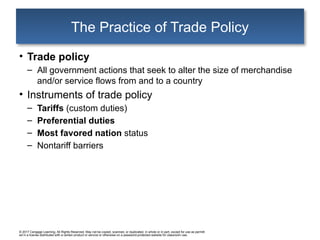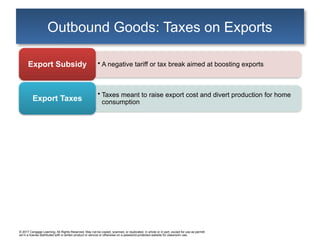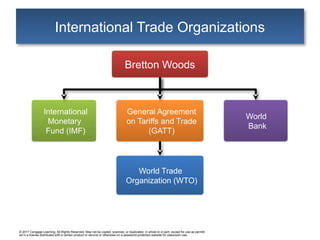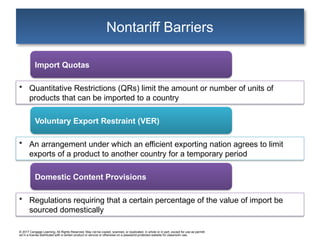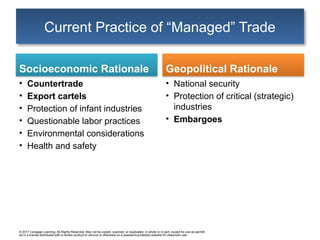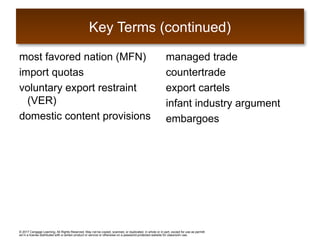More Related Content
© 2017 Cengage Learning. All Rights Reserved. May not be copied,.docx Small Business Management, 18eLongeneckerPettyPalichH.docx The External Environment Opportunities, Threats, Industry Competition and Com... Rise of Globalization................... Chapter 16Business Cycles and UnemploymentLectu.docx 1. Strategic Management and Strategic Competitiveness.pptx · version 1 (2).pdf Similar to Evolution of International Business..... (20)
Chapter 1 - Entrepreneurial Life - SBM1102 Chapter 25 aggregate demand and the powerful consumer Chapter 7Strategy and Technology©2017 Cengage Learning. Al Chapter 1 - Small Business Management - Cengage Small Business Management, 18eLongeneckerPettyPalichH.docx chapter 9 macro mankiw - application international trade 364416337-SMGT-hitt-ppt-12e-ch07-SM.pptx Open Economy - Macroeconomics - C03L05 princ-ch01-presentation7e.pptxzd... Ma ch 08 productivity and growth Recently uploaded (20)
PHYSIOLOGICAL VALUE BASED PRIVACY PRESERVATION OF PATIENT’S DATA USING ELLIPT... Networking news latter snnansbhshabbsbshabbsb ratio analysis presentation for graduate Lecture on Perfect Competition of the course introduction to microeconomics Veritas Interim report 1 January – 30 June 2025 Risk Based Audit - Key to managhe the bussines & Creating the value Pension Trustee Training (1).pdf From Salih Shah Corporate Governance and Financial Decision-Making in Consumer Goods.pptx Social Studies Subject for High School_ Ancient Greece & Greek Mytholoy.pptx balanced_and_unbalanced_growth_theory_ppt.pptx epic-retirement-criteria-for-funds (1).pdf Tiếng anh 7 Friends Plus_ Unit 3 _Final Test.docx Science 5555555555555555555555555555.pdf Private Equity in Action: Sector-Specific Investments for High Growth” Joints.ppts qxqwcesceecsxwdsxwcdewd2wsew Premium Ch 6 Supply, Demand, and Government Policies.pptx Income processes in Poland: An analysis based on GRID data Field Experiments in Experiments: A Basic Introduction In July, the Business Activity Recovery Index Worsened Again - IER Survey Chapterrrrrrrrrrrrrrrrrrrrrrrrr 2_AP.pdf Evolution of International Business.....
- 1. © 2017 Cengage Learning. All Rights Reserved. May not be copied, scanned, or duplicated, in whole or in part, except for use as
permitted in a license distributed with a certain product or service or otherwise on a password-protected website for classroom use.
Chapter 2
The Evolution of
International Business
Introduction to Global Business
- 2. © 2017 Cengage Learning. All Rights Reserved. May not be copied, scanned, or duplicated, in whole or in part, except for use as permitt
ed in a license distributed with a certain product or service or otherwise on a password-protected website for classroom use.
1. Briefly explain why trade and foreign investment are
good for society as a whole.
2. Describe the major international trade theories and how
they operate.
3. Evaluate trade policy, the main instruments of trade
policy, and their impact on business, consumers, and
governments.
4. Explain the rationale behind a country’s choice of
managing trade.
After studying this chapter, you should be able to:
- 3. © 2017 Cengage Learning. All Rights Reserved. May not be copied, scanned, or duplicated, in whole or in part, except for use as permitt
ed in a license distributed with a certain product or service or otherwise on a password-protected website for classroom use.
Terms
• International business
– All commercial transactions, both private and public between
nations of the world
• Trade
– The two-way flow of exports and imports of goods (merchandise
trade) and services (service trade)
• Foreign direct investment
– Inflows of capital from abroad for investing in domestic plant and
equipment for the production of goods and/or services and for
buying domestic firms
- 4. © 2017 Cengage Learning. All Rights Reserved. May not be copied, scanned, or duplicated, in whole or in part, except for use as permitt
ed in a license distributed with a certain product or service or otherwise on a password-protected website for classroom use.
EXHIBIT 2.1 WORLD’S TEN LARGEST ECONOMIES: PURCHASING
POWER PARITY (PPP) BASIS* (U.S. $ 2012)
*PPP conversion factor is the number of units of a country’s currency that is required to buy the same
amount of goods and services in the domestic market that a U.S. dollar would buy in the United States.
**GNI is the total value of goods and services produced by a country plus net receipts of employee
compensation and property income from abroad.
- 5. © 2017 Cengage Learning. All Rights Reserved. May not be copied, scanned, or duplicated, in whole or in part, except for use as permitt
ed in a license distributed with a certain product or service or otherwise on a password-protected website for classroom use.
Benefits of International Trade
A greater amount of
choice in the
availability of goods
and services
Competition results
in lower prices for
goods and services
consumed
Increased quality of
life and
higher living
standards
- 6. © 2017 Cengage Learning. All Rights Reserved. May not be copied, scanned, or duplicated, in whole or in part, except for use as permitt
ed in a license distributed with a certain product or service or otherwise on a password-protected website for classroom use.
EXHIBIT 2.2 WORLD TRADE PATTERNS: TOP TEN EXPORTING NATIONS
IN 2012 (PERCENTAGE OF TOTAL WORLD EXPORTS)
- 7. © 2017 Cengage Learning. All Rights Reserved. May not be copied, scanned, or duplicated, in whole or in part, except for use as permitt
ed in a license distributed with a certain product or service or otherwise on a password-protected website for classroom use.
EXHIBIT 2.3 NET INFLOWS OF FOREIGN DIRECT INVESTMENT BY
REGION AND INDUSTRIALIZATION
- 8. © 2017 Cengage Learning. All Rights Reserved. May not be copied, scanned, or duplicated, in whole or in part, except for use as permitt
ed in a license distributed with a certain product or service or otherwise on a password-protected website for classroom use.
EXHIBIT 2.3 NET INFLOWS OF FOREIGN DIRECT INVESTMENT BY
REGION AND INDUSTRIALIZATION (continued)
- 9. © 2017 Cengage Learning. All Rights Reserved. May not be copied, scanned, or duplicated, in whole or in part, except for use as permitt
ed in a license distributed with a certain product or service or otherwise on a password-protected website for classroom use.
Major Theories of International Trade
Mercantilism
•The premise that
a nation could
only gain from
external trading if
it had a trade
surplus
Specializatio
n
•Free trade en-
courages countries
to specialize in the
production of those
goods and services
that they most
efficiently produce
Factor
Endowments
•Nations primarily
export goods and
services that
intensely use their
abundant factors
of production
- 10. © 2017 Cengage Learning. All Rights Reserved. May not be copied, scanned, or duplicated, in whole or in part, except for use as permitt
ed in a license distributed with a certain product or service or otherwise on a password-protected website for classroom use.
Trade Theory Terms
• Factors of production
– Endowments used to produce goods and services:
• Land (quantity, quality, and mineral resources beneath it)
• Labor (quantity and skills)
• Capital (cost)
• Technology (quality)
• Trade surplus
– When the value of exports exceeds the value of imports; the
opposite of a trade deficit
- 11. © 2017 Cengage Learning. All Rights Reserved. May not be copied, scanned, or duplicated, in whole or in part, except for use as permitt
ed in a license distributed with a certain product or service or otherwise on a password-protected website for classroom use.
Wealth Accumulation as a Basis for Trade
Theory: Mercantilism
• Mercantilism is the oldest form of trade theory.
– Practiced during the 1500–1750 period as Europe moved toward
nationalism
– Wealth—both personal and national—largely determined by the
amount of precious metal owned
• Mercantilists believed that for a nation to be wealthy, it
must export as much as possible and import as little as
possible so that the country would have a trade surplus.
• Mercantilists did not want to see the big picture:
– If all nations increased exports and decreased imports, there
would be a surplus of exports that would lead to unpleasant
results.
- 12. © 2017 Cengage Learning. All Rights Reserved. May not be copied, scanned, or duplicated, in whole or in part, except for use as permitt
ed in a license distributed with a certain product or service or otherwise on a password-protected website for classroom use.
Specialization as a Basis for Trade Theory:
Absolute and Comparative Advantage
• Absolute advantage
– The ability of one country to produce a good or service more
efficiently than another
• Comparative advantage
– The ability of one country that has an absolute advantage in the
production of two or more goods (or services) to produce one of
them relatively more efficiently than the other
- 13. © 2017 Cengage Learning. All Rights Reserved. May not be copied, scanned, or duplicated, in whole or in part, except for use as permitt
ed in a license distributed with a certain product or service or otherwise on a password-protected website for classroom use.
Factor Endowments as a Basis
for Trade Theory
• The Heckscher–Ohlin (H–O) theory
– Attributes the comparative advantage of a nation to its factor
endowments: land (quantity, quality, and mineral resources
beneath it), labor (quantity and skills), capital (cost), and
technology (quality)
• Key assumptions of the H–O theory:
– Perfect competition in the marketplace
– Perfect immobility of factors of production among countries
- 14. © 2017 Cengage Learning. All Rights Reserved. May not be copied, scanned, or duplicated, in whole or in part, except for use as permitt
ed in a license distributed with a certain product or service or otherwise on a password-protected website for classroom use.
Factor Endowments as a Basis
for Trade Theory (continued)
• Factor price equalization theory
– When factors are allowed to move freely among trading nations,
efficiency increases, which leads to superior allocation of
production of goods and services among countries.
– Free mobility of factors will lead to efficient reallocation of
resources (factors of production) until price equilibrium is reached.
- 15. © 2017 Cengage Learning. All Rights Reserved. May not be copied, scanned, or duplicated, in whole or in part, except for use as permitt
ed in a license distributed with a certain product or service or otherwise on a password-protected website for classroom use.
Porter’s “Diamond” Model of
National Competitive Advantage
Chance
Demand
conditions
Factor
conditions
Government
Firm strategy,
structure, and
rivalry
Related and
supporting
industries
- 16. © 2017 Cengage Learning. All Rights Reserved. May not be copied, scanned, or duplicated, in whole or in part, except for use as permitt
ed in a license distributed with a certain product or service or otherwise on a password-protected website for classroom use.
The Practice of Trade Policy
• Trade policy
– All government actions that seek to alter the size of merchandise
and/or service flows from and to a country
• Instruments of trade policy
– Tariffs (custom duties)
– Preferential duties
– Most favored nation status
– Nontariff barriers
- 17. © 2017 Cengage Learning. All Rights Reserved. May not be copied, scanned, or duplicated, in whole or in part, except for use as permitt
ed in a license distributed with a certain product or service or otherwise on a password-protected website for classroom use.
Inbound Goods: Taxes on Imports
•Customs duties on imports that are collected by a designated
government agency responsible for regulating imports
Tariffs
•An import tax that assigns a fixed dollar amount
per physical unit
Specific Tariff
•A tax on imports levied as a constant percentage of
the monetary value of one unit of the imported good
Ad Valorem Tariff
•An import tariff established by a nation for goods of certain countries
and not applied to the same goods of other countries
Preferential
Duties
•An agreement where a large number of developed countries permit duty-
free imports of a selected list of products that originate from specific
countries
Generalized System
of Preferences (GSP)
- 18. © 2017 Cengage Learning. All Rights Reserved. May not be copied, scanned, or duplicated, in whole or in part, except for use as permitt
ed in a license distributed with a certain product or service or otherwise on a password-protected website for classroom use.
Outbound Goods: Taxes on Exports
• A negative tariff or tax break aimed at boosting exports
Export Subsidy
• Taxes meant to raise export cost and divert production for home
consumption
Export Taxes
- 19. © 2017 Cengage Learning. All Rights Reserved. May not be copied, scanned, or duplicated, in whole or in part, except for use as permitt
ed in a license distributed with a certain product or service or otherwise on a password-protected website for classroom use.
International Trade Organizations
International
Monetary
Fund (IMF)
World
Bank
Bretton Woods
General Agreement
on Tariffs and Trade
(GATT)
World Trade
Organization (WTO)
- 20. © 2017 Cengage Learning. All Rights Reserved. May not be copied, scanned, or duplicated, in whole or in part, except for use as permitt
ed in a license distributed with a certain product or service or otherwise on a password-protected website for classroom use.
Nontariff Barriers
Import Quotas
• Quantitative Restrictions (QRs) limit the amount or number of units of
products that can be imported to a country
Voluntary Export Restraint (VER)
• An arrangement under which an efficient exporting nation agrees to limit
exports of a product to another country for a temporary period
Domestic Content Provisions
• Regulations requiring that a certain percentage of the value of import be
sourced domestically
- 21. © 2017 Cengage Learning. All Rights Reserved. May not be copied, scanned, or duplicated, in whole or in part, except for use as permitt
ed in a license distributed with a certain product or service or otherwise on a password-protected website for classroom use.
Current Practice of “Managed” Trade
Socioeconomic Rationale
• Countertrade
• Export cartels
• Protection of infant industries
• Questionable labor practices
• Environmental considerations
• Health and safety
Geopolitical Rationale
• National security
• Protection of critical (strategic)
industries
• Embargoes
- 22. © 2017 Cengage Learning. All Rights Reserved. May not be copied, scanned, or duplicated, in whole or in part, except for use as permitt
ed in a license distributed with a certain product or service or otherwise on a password-protected website for classroom use.
international business
trade
foreign direct investment
outsourcing
mercantilism
factors of production
trade surplus
absolute advantage
comparative advantage
factor price equalization
theory
Heckscher–Olin (H–O) theory
trade policy
tariffs
custom duties
specific tariff
ad valorem tariff
preferential duties
generalized system of
preferences (GSP)
export subsidy
export taxes
Key Terms
- 23. © 2017 Cengage Learning. All Rights Reserved. May not be copied, scanned, or duplicated, in whole or in part, except for use as permitt
ed in a license distributed with a certain product or service or otherwise on a password-protected website for classroom use.
most favored nation (MFN)
import quotas
voluntary export restraint
(VER)
domestic content provisions
managed trade
countertrade
export cartels
infant industry argument
embargoes
Key Terms (continued)


